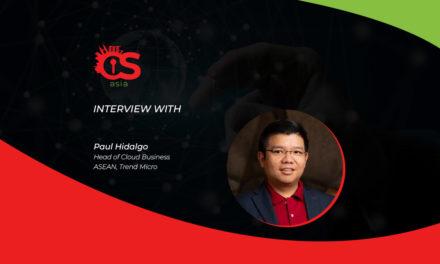Here is how cloud-centric organizations can diagnose and troubleshoot three internal cyber threats holistically and emerge more secure for the future
The benefits of the cloud are undeniable. Yet, as more organizations migrate to the technology, the risks associated with this shift have only intensified.
The conveniences of the cloud come with a steep security price, and businesses are finding themselves in increasingly perilous territory characterized by the confluence of three threats: publicly exposed workloads; critical vulnerabilities; and over-privileged identities.
For organizations relying on cloud technology, this growing trifecta of cloud risks should be treated as an urgent wake-up call.

Not a fleeting cloud trend
The increasing incidence of the three above-mentioned cloud risks is not a fleeting trend: it is a fundamental challenge that requires a strategic, unified response.
The convergence of public data exposure, critical vulnerabilities, and over-privileged identities represents an urgent security crisis. Cloud data security cannot be an afterthought.
What are the signs of the three threats to look out for? Certain patterns are clear:
- Workloads that are both publicly accessible and vulnerable to exploitation are frequently coupled with overly generous access permissions.
- Critical vulnerabilities have often been left unpatched for too long, create a foothold for cybercriminals to escalate their attacks.
- Over-privileged identities, often unintentionally created during the setup of testing environments or development cycles, can grant intruders expansive access upon their gaining a foothold in the system.
When these three patterns converge within a single workload, the risk is exponentially amplified. Together, they create a fast track for attackers, allowing them to gain access, exploit weaknesses, and traverse entire networks with relative ease.
In this toxic interplay of cloud threats what could have been a limited breach could turn into a full-blown data disaster.
Steps for preemptive mitigation
Awareness of the problem is a critical first step, but it must be accompanied by action.
- Organizations need to prioritize identity and access management, recognizing that identity is the new perimeter in a cloud-first world. By enforcing multi-factor authentication, rotating access credentials, and adhering to the principle of least privilege, businesses can restrict the pathways available to attackers.
- Similarly, vulnerability management must go beyond routine scans and generic patching schedules. Vulnerabilities must be prioritized based on risk context, especially for exposed and privileged systems. Addressing these vulnerabilities swiftly can seal off potential entry points and neutralize high-risk flaws before they are exploited. Kubernetes configurations present another weak spot that demands immediate attention. Publicly accessible Kubernetes API servers, often configured with excessive privileges, provide a tempting target for attackers. Implementing stricter controls over Kubernetes environments such as reducing public access and enforcing role-based access controls can help mitigate these risks.
- Finally, organizations must take a holistic approach to cloud security to prevent the fragmentation of security practices and the disconnection of tools.
By integrating identity management, vulnerability tracking, and configuration monitoring into a single, unified process, security teams can gain the visibility needed to identify and prioritize the highest risks.
This unified approach will enable proactive collaboration and prevent toxic threat combinations from going undetected.

















